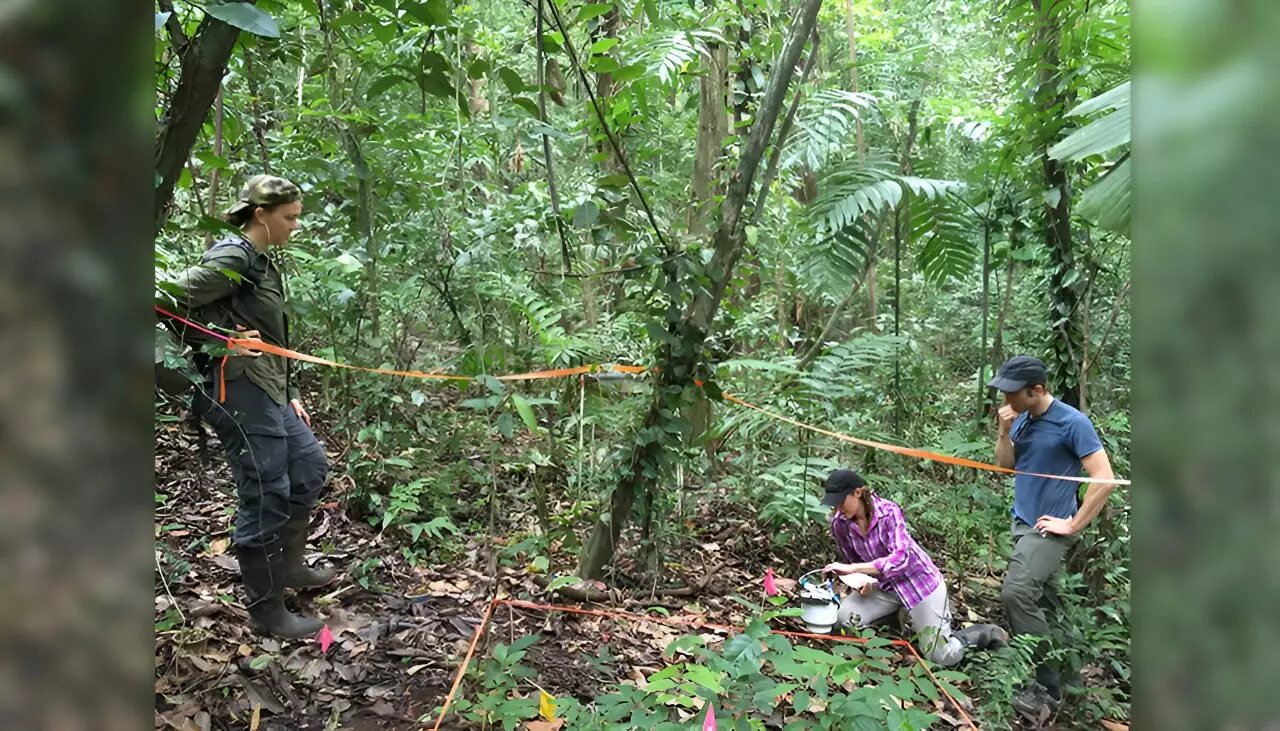Tropical forests are vital in the global carbon cycle, acting as a major carbon sink. However, recent research suggests that climate change may disrupt this delicate balance by increasing soil carbon vulnerability. A study by Lawrence Livermore National Laboratory (LLNL) scientists, along with researchers from Colorado State University and the Smithsonian Tropical Research Institute, has revealed alarming findings regarding the potential impact of warming and drying on tropical forest soils.
The research published in Nature indicates that warming and drying of tropical forest soils could lead to an increase in soil carbon vulnerability. The study conducted experiments in Panama, where soil was heated by 4°C and rainfall was reduced by 50%. The results showed that both warming and drying led to higher carbon-14 levels in the CO2 released by the soil, indicating an increase in the average age of carbon being released. This shift in soil carbon dynamics could have significant implications for the overall carbon balance of tropical forests.
The findings of the study suggest that both warming and drying could accelerate the loss of older soil carbon or reduce the incorporation of fresh carbon inputs, ultimately leading to increased soil carbon losses. This could have a negative impact on carbon storage in tropical forests, which are already under threat from deforestation and land degradation. The shorter mean residence time of carbon in tropical terrestrial ecosystems makes them particularly vulnerable to changes in carbon inputs and outputs.
The mechanisms underlying the increase in soil carbon vulnerability differed between warming and drying. Warming accelerated the decomposition of older carbon, depleting newer carbon and increasing CO2 emissions. On the other hand, drying suppressed the decomposition of newer carbon inputs and decreased soil CO2 emissions, leading to a higher contribution of older carbon to CO2 release. These changes in carbon dynamics could have far-reaching consequences for tropical ecosystem carbon balance and carbon-climate feedbacks.
Climate projections suggest that the tropics will experience both warmer and drier conditions in the future, with increasing drought intensity and longer dry seasons. This could further exacerbate the impact of climate change on tropical forest soil carbon vulnerability. It is essential to consider the interactions between warming and drying in order to accurately predict the future carbon balance of tropical ecosystems.
The study by LLNL scientists highlights the potential threat posed by climate change to tropical forest soil carbon vulnerability. The findings indicate that both warming and drying could have a significant impact on soil carbon dynamics, ultimately leading to increased carbon losses. It is crucial to further research this issue and develop strategies to mitigate the negative effects of climate change on tropical forests. By understanding the mechanisms underlying soil carbon vulnerability, we can work towards preserving these important ecosystems for future generations.


Leave a Reply